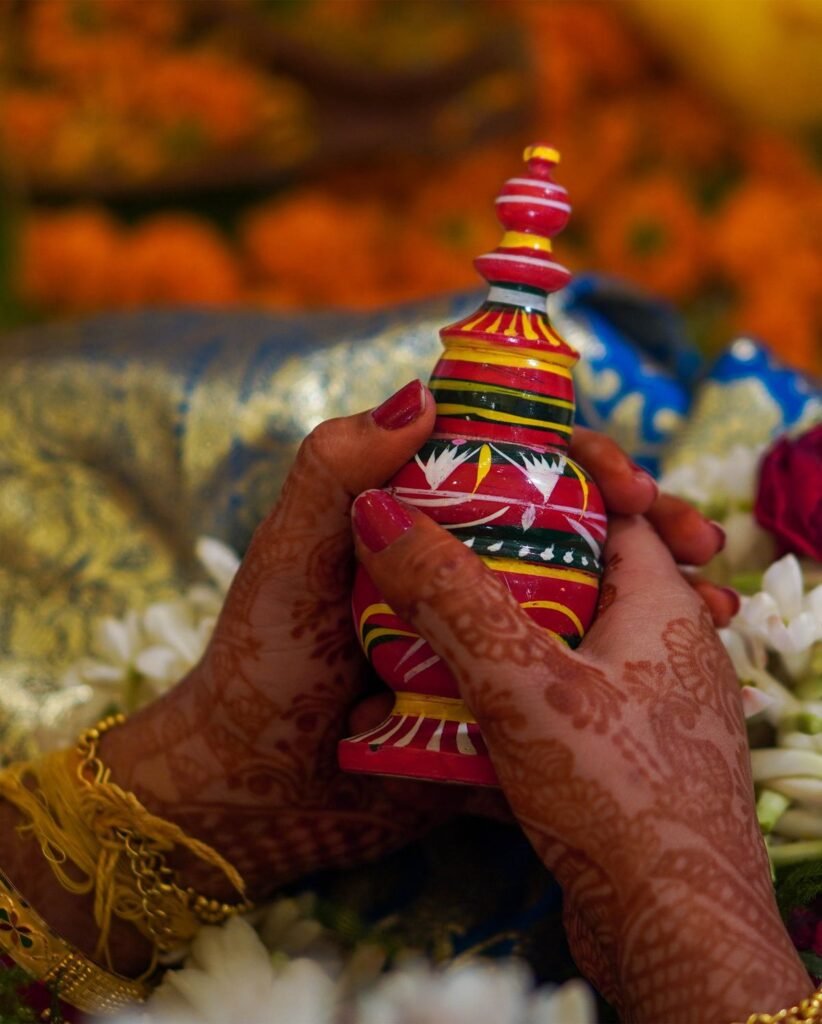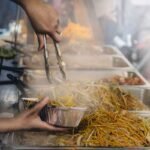Beauty rituals have been an integral part of cultures around the world, passed down through generations as a symbol of tradition and elegance. From Africa to Asia to the Americas, each region boasts its own unique beauty practices that highlight the diversity and richness of global beauty traditions. Let’s explore some of these cultural beauty rituals.
Key Takeaways
- Beauty rituals reflect the cultural heritage and values of different regions.
- Natural ingredients like argan oil, shea butter, and rice water are commonly used in traditional beauty practices.
- Ancient beauty practices like kohl eyeliner in Egypt and turmeric face masks in India have stood the test of time.
- Indigenous beauty traditions in the Americas, such as maize hair treatments in Mexico and Amazonian clay masks in Brazil, celebrate the natural resources of the land.
- Exploring global beauty rituals can broaden our understanding of beauty beyond cosmetic trends and commercial products.
Traditional Beauty Rituals in Africa

Kohl Eyeliner in Egypt
The use of kohl as eyeliner is one of the oldest beauty rituals in Egypt, tracing back thousands of years. Ancient Egyptians adorned their eyes with this substance, not only for aesthetic appeal but also to protect their eyes from the harsh desert sun.
- Kohl was traditionally made from a mixture of soot and other natural ingredients.
- It was believed to have protective properties against the ‘evil eye’.
- The application process was a precise art form, passed down through generations.
The dramatic eye makeup worn by both men and women was a symbol of social status and religious devotion.
Today, kohl continues to be a popular beauty product in Egypt, with modern variations available in the market. It remains a poignant reminder of the country’s rich cultural heritage and its enduring influence on beauty standards around the world.
Argan Oil in Morocco
Nestled within the arid landscapes of Morocco, the argan tree yields a fruit whose oil has been cherished for centuries, not only for its culinary prestige but also for its cosmetic virtues. Rich in vitamin E and fatty acids, argan oil is a natural elixir for hair and skin health.
Moroccan women have long harnessed the power of this golden oil, incorporating it into their beauty rituals in various ways:
- As a hydrating moisturizer to soften skin
- To tame frizz and add shine to hair
- As a base for exfoliating scrubs
The tradition of extracting argan oil is a labor-intensive process, often undertaken by local women’s cooperatives. This practice not only preserves the cultural heritage but also empowers communities economically.
The use of argan oil extends beyond personal beauty routines, reflecting a deep connection with the land and a commitment to sustainable practices. Its popularity worldwide is a testament to the enduring legacy of Moroccan beauty traditions.
Shea Butter in Ghana
In the heart of Ghana, the use of shea butter is a beauty ritual passed down through generations. Extracted from the nuts of the shea tree, this rich emollient is revered for its moisturizing and healing properties.
Shea butter is integral to the daily skincare routines of many Ghanaians. It is used to protect and nourish the skin, especially in the dry harmattan season when the winds can strip moisture from the skin.
- It serves as a natural sunscreen due to its rich content of vitamins A and E.
- The anti-inflammatory properties make it a remedy for minor skin irritations and a soothing agent for muscle aches.
- Pregnant women often use shea butter to prevent stretch marks during and after pregnancy.
The versatility of shea butter extends beyond beauty; it is also used in hair care, as a lip balm, and even in cooking. Its cultural significance is reflected in the local economy, as the shea butter market provides a source of income for many women in rural communities.
Ancient Beauty Practices in Asia

Rice Water Skincare in Japan
For centuries, Japanese women have harnessed the benefits of rice water to maintain a youthful complexion and promote healthy skin. The process involves fermenting rice water, which is then used as a facial cleanser or toner. This traditional beauty ritual is known for its simplicity and effectiveness.
The secret lies in the vitamins and minerals found in rice water, which are believed to nourish the skin and improve its elasticity. Additionally, the inositol in rice water can help slow down the aging process and stimulate blood flow, giving the skin a radiant glow.
- Ferment rice water by soaking clean rice in water for 24-48 hours.
- Strain the rice water into a clean bottle for use.
- Apply the rice water to the face with a cotton pad, using it as a toner.
Embracing this age-old tradition can be a simple yet profound step towards achieving a clear and radiant complexion, naturally.
Turmeric Face Masks in India
For centuries, the vibrant yellow spice known as turmeric has been a staple in Indian beauty rituals. Its anti-inflammatory and antibacterial properties make it a cherished ingredient for face masks.
Turmeric face masks are believed to brighten the skin, reduce blemishes, and provide a youthful glow. The application process is simple and can be done at home:
- Mix a small amount of turmeric powder with gram flour.
- Add a few drops of lemon juice and milk to create a paste.
- Apply the mixture to the face and neck, avoiding the eyes.
- Leave the mask on for about 15-20 minutes before rinsing with cool water.
The consistent use of turmeric face masks is said to enhance the natural beauty and health of the skin. While it is a powerful natural remedy, those with sensitive skin should perform a patch test before full application to avoid potential irritation.
Gua Sha in China
Gua Sha is a traditional Chinese practice that involves scraping the skin with a smooth-edged instrument. This technique is believed to improve circulation and promote healing. The gentle scraping motion is said to help with the ‘chi’ or life energy flow, enhancing the skin’s appearance and overall wellness.
Gua Sha is not only about beauty; it’s a holistic approach that intertwines physical and spiritual health. The practice can vary, but typically includes the following steps:
- Applying oil to the skin to ensure the tool glides smoothly.
- Using the Gua Sha tool, usually made from jade or rose quartz, to scrape the skin in upward strokes.
- Focusing on areas where tension is held, like the neck and shoulders, as well as the face.
The simplicity of Gua Sha belies its profound effects. Regular sessions can lead to a more vibrant complexion and a sense of relaxation that permeates the body.
While Gua Sha is most commonly associated with facial care, it is also used on the body to address muscle soreness and improve lymphatic drainage. The practice has seen a resurgence in popularity as people worldwide seek out natural and traditional methods of self-care.
Indigenous Beauty Traditions in the Americas

Maize Hair Treatments in Mexico
In the heart of Mexico, the use of maize, or corn, extends beyond its staple presence in the culinary world. It has also woven its way into the fabric of traditional beauty rituals. Maize has been revered for its nourishing properties when used in hair treatments, providing a natural way to strengthen and revitalize locks.
Maize is rich in vitamins and minerals that are essential for healthy hair growth. The traditional process involves:
- Grinding the maize into a fine powder.
- Mixing the powder with water or natural oils to create a paste.
- Applying the paste to the hair and scalp.
- Leaving the treatment in for a period before rinsing it off.
This simple yet effective treatment has been passed down through generations, offering a glimpse into the sustainable beauty practices of the indigenous cultures of Mexico. It exemplifies how local resources can be harnessed to maintain beauty and health in a way that is in harmony with nature.
Amazonian Clay Masks in Brazil
Deep within the lush rainforests of Brazil, the use of Amazonian clay as a natural skincare remedy has been a tradition for centuries. Rich in minerals, this clay is renowned for its ability to detoxify and rejuvenate the skin, leaving it smooth and refreshed.
The application of Amazonian clay masks is a ritualistic process, often followed by indigenous communities with great care. The masks are known for their purifying properties, drawing out impurities from the skin’s pores.
- First, the clay is harvested from the banks of the Amazon River, ensuring sustainability and respect for the environment.
- Next, it is mixed with water or natural oils to create a smooth paste.
- The paste is then applied to the face and body, and left to dry, allowing the minerals to penetrate the skin.
- Finally, the mask is washed off, revealing a clearer and more radiant complexion.
Embracing the wisdom of ancestral beauty rituals, Amazonian clay masks offer a connection to the earth and its healing powers. This practice not only enhances physical beauty but also provides a moment of spiritual reflection and connection to nature.
Inca Quinoa Scrubs in Peru
The ancient Inca civilization, renowned for its sophisticated culture and innovative agricultural techniques, also developed unique beauty rituals that have been passed down through generations. One such practice is the use of quinoa, not just as a staple food but also as a key ingredient in skincare.
Quinoa scrubs are celebrated for their exfoliating properties, which leave the skin smooth and rejuvenated. The saponins found in quinoa act as natural cleansers, helping to purify the skin and remove dead cells.
Quinoa is rich in vitamins and minerals, making it an excellent choice for a natural and nutritious skincare routine:
- Vitamin B helps improve skin elasticity.
- Magnesium aids in skin repair and regeneration.
- Iron carries oxygen to skin cells, promoting a healthy glow.
Embracing the wisdom of the Incas, modern beauty enthusiasts continue to incorporate quinoa into their skincare regimens, valuing its organic and multifaceted benefits.
Delve into the rich tapestry of Indigenous beauty traditions across the Americas and discover the natural ingredients and ancient practices that have been cherished for generations. From the nourishing properties of native plants to the holistic approaches to wellness, these traditions offer a unique perspective on beauty that is deeply rooted in cultural heritage. To learn more and incorporate these time-honored rituals into your modern beauty routine, visit our website and explore our extensive collection of related products and insightful articles. Embrace the wisdom of the ages and enhance your beauty regimen with the power of tradition.
Conclusion
In conclusion, the exploration of cultural beauty rituals from around the world reveals a rich tapestry of tradition and elegance. From ancient practices rooted in history to modern innovations that reflect contemporary values, beauty rituals serve as a reflection of cultural identity and heritage. Through these rituals, individuals not only enhance their physical appearance but also connect with their roots and express their unique sense of beauty. The diversity and depth of cultural beauty rituals underscore the universal human desire for self-expression and self-care. As we continue to appreciate and learn from these diverse traditions, we celebrate the beauty of cultural diversity and the timeless elegance that transcends borders.
Frequently Asked Questions
What are some common beauty rituals in Africa?
Some common beauty rituals in Africa include using kohl eyeliner in Egypt, argan oil in Morocco, and shea butter in Ghana.
What are some ancient beauty practices in Asia?
Ancient beauty practices in Asia include rice water skincare in Japan, turmeric face masks in India, and Gua Sha in China.
What are some indigenous beauty traditions in the Americas?
Indigenous beauty traditions in the Americas include maize hair treatments in Mexico, Amazonian clay masks in Brazil, and Inca quinoa scrubs in Peru.
How do cultural beauty rituals contribute to tradition and elegance?
Cultural beauty rituals contribute to tradition and elegance by preserving heritage, promoting self-care, and enhancing natural beauty.
Are beauty rituals in different regions influenced by local resources?
Yes, beauty rituals in different regions are often influenced by the availability of local resources such as plants, minerals, and natural ingredients.
Can cultural beauty rituals be adapted for modern skincare routines?
Yes, cultural beauty rituals can be adapted for modern skincare routines by incorporating traditional practices into contemporary products and routines.



